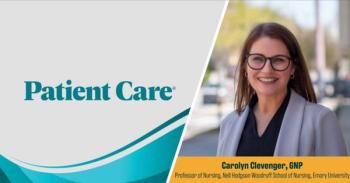
Gout, 2011: Q & A Update on an Ancient Scourge
Gout, once considered a disease of kings, is now a common and equal opportunity disease that affects as many as 3 million people in the US. Gouty arthritis has now become a serious problem in organ transplant recipients; in diuretic users; and in patients with CKD, hypertension, metabolic syndrome, heart failure, plus more.
Gout, once considered a disease of kings, is now a common and equal opportunity disease that affects as many as 3 million people in the US.1 In fact, the prevalence of gout has doubled in recent decades.2 Gouty arthritis has now become a serious problem in organ transplant recipients; in the elderly; in those with chronic kidney disease; in diuretic users; in patients with hypertension, metabolic syndrome, or heart failure; and in the perioperative period.2
It is important to realize that the treatment of gout has also changed substantially in the past decade. Use of old standbys such as allopurinol and colchicine has changed-especially their dosing regimens-and target uric acid levels have changed as well. New drugs have reached the market (febuxostat), and novel diagnostic strategies are being tested (ultrasonography and CT scanning of joints).
A 5-point update may help you diagnose and treat this common disorder with an evidence-based approach.
Prescribing prophylactic allopurinol: what is the “treat-to-target" strategy?
Most patients with gout are underdosed with allopurinol, the most commonly used prophylactic medication. The older method of dosing was to give 300 mg/d or 100 mg if there was a decrease in glomerular filtration rate (GFR). Today, patients with gout should be given allopurinol up to a dosage of 800 mg/d to target a uric acid level of 6 mg/dL or less.2 Caution is still urged when allopurinol is administered to people with renal disease. Decreased doses (100 mg total) or discontinuation have been advised. When allopurinol therapy is initiated, it may precipitate an acute gouty attack. Its initial prescription should be accompanied by NSAIDs, colchicine, or corticosteroids (see dosing below).
If colchicine is used, how should it be dosed and what are its side effects?
The old paradigm for colchicine was “cruel and unusual punishment.” High-dose initiation of colchicine (two 0.6-mg tablets) was followed by another tablet every 6 hours until GI upset occurred. This was an uncomfortable regimen for patients who were already in pain. Today, colchicine for acute gout should be given in a “low-dose regimen”-1.2 mg initially (two 0.6-mg tablets) followed by 0.6 mg 1 hour later.3 Continuation of colchicine after the initial day may require 0.6 mg 3 times a day for approximately 3 more days with a taper to 2 tablets a day for a few days and then discontinuation.
However, colchicine has become a second-line drug for acute gout. NSAIDs and corticosteroids are preferred. Uricosurics (such as probenecid) are used less often because they are ineffective in patients with stage 3 chronic kidney disease (CKD3) and increase the likelihood of uric acid stones.
There are still a number of caveats with colchicine that cannot be ignored. The drug can interfere with the metabolism of cyclosporine, clarithromycin/azithromycin, statins, and fibrates (causing muscle injury), verapamil, and ketoconazole.
Cost has become another colchicine drawback. It used to cost $6 to $12 per month because it was generic. It is now a brand-name drug. The clinical trials that proved the efficacy of the “low-dose regimen” earned a patent for the specific colchicine used in the studies. Now, once-daily use can total $175 per month and twice-daily, $350 per month. The manufacturer offers a patient assistance program, but elderly people who live on fixed incomes may still not be able to afford it.
What about newer agents such as febuxostat?
Febuxostat is superior to allopurinol in reducing uric acid levels if allopurinol is given in fixed doses of 300 mg/d.2-4 When a “treat-to-target" strategy is used with allopurinol (escalating doses as necessary to 800 mg total/d), this advantage disappears. Situations in which febuxostat may be superior to allopurinol include use in people with CKD3 and gout and in people with allopurinol sensitivity.
The future: how to differentiate gout from other acute arthritides?
The “gold standard” for the diagnosis of gout is joint aspiration followed by identification of monosodium urate crystals. This procedure is not always available, however, and practitioners may feel uncomfortable when joints such as the ankle or wrist are inflamed.
What if there is confusion between gout and other arthritides?
A scoring system that favors gout is available.5 Characteristics more consistent with gout (as opposed to septic joint, for example) include:
• More than 1 attack of acute arthritis
• Mono-/oligo-arthritis occurring more than once
• Rapid progression of pain (a peak in < 24 hours)
• Podagra
• Erythema
• Unilateral tarsitis
• The presence of tophi
• Hyperuricemia (not always present in gout)
A score of 4 or higher using these criteria suggests-but does not prove- gout.
Future diagnostic help may be obtained with either CT scanning of involved joints or ultrasonography. Joint aspiration may then be obviated.
How is gout managed when it occurs with CKD3, 4, or 5?
Gouty attacks are usually treated with NSAIDs or colchicine. Both classes of drugs are problematic when CKD is present, however. In fact, NSAIDs can lead to renal failure in these at-risk persons. A safer way to treat gout when the GFR is low is to administer approximately 40 mg of prednisone orally for 5 to 7 days. A taper is unnecessary.
References:
References
1. Fravel MA, Ernst ME. Management of gout in the older adult. Am J Pharm. 2011;9:271-285.
2. Terkeltaub R. Update on gout: new therapeutic strategies and options. Nat Rev Rheumatol. 2010;6:30-38.
3. Mandell BF, Edwards NL, Sundy JS, et al. Preventing and treating acute gout attacks across the clinical spectrum: a roundtable discussion. Clev Clin J Med. 2010;77:S2-S25.
4. Smith HS, Bracken D, Smith JM. Gout-revisited. J Pain. 2011;1-17.
5. Vazquez-Mellado J, Hernandez-Cuevas CB, Alvarez-Hernandez E, et al. The diagnostic value of the proposal for clinical gout diagnosis (CGD). Clin Rheumatol. 2011; October 07, 2011; published online.
Newsletter
Enhance your clinical practice with the Patient Care newsletter, offering the latest evidence-based guidelines, diagnostic insights, and treatment strategies for primary care physicians.
















































































































































































































































































